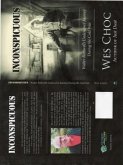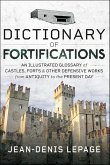The authors of Castrum to Castle trace the "evolution of defensive architecture at the turn of the late Middle Ages and the beginning of the Renaissance." -Old Barbed Wire Blog Across western Europe, the long tradition of castle-building took on its most sophisticated form in the later Medieval period and then, in response to the development of gunpowder weapons, it underwent a fundamental change-from castle to fortress. This, the second volume of a highly illustrated new study of medieval fortification, gives a fascinating insight into the last great age of castles and the centuries of violence and conflict they were part of. It traces the advances made between the twelfth and the fifteenth centuries, looking in particular at the form these fortifications took in contexts as different as Italy, Wales, France and the Iberian Peninsula. Many would regard this period in the history of castles as the classic age. It was followed by a phase of relative decline as the conditions of warfare changed and castles had to be adapted to cope with cannon. The conventional castle gave way to new styles of fortification. But, as the authors demonstrate, they were still essential factors in military calculations and campaigns-they were of direct strategic and tactical importance wherever there was an attempt to take or hold territory. "A fascinating treatise on the way such buildings were modified to provide protection from growing threats." -Books Monthly
Dieser Download kann aus rechtlichen Gründen nur mit Rechnungsadresse in A, B, BG, CY, CZ, D, DK, EW, E, FIN, F, GR, HR, H, IRL, I, LT, L, LR, M, NL, PL, P, R, S, SLO, SK ausgeliefert werden.
Hinweis: Dieser Artikel kann nur an eine deutsche Lieferadresse ausgeliefert werden.









